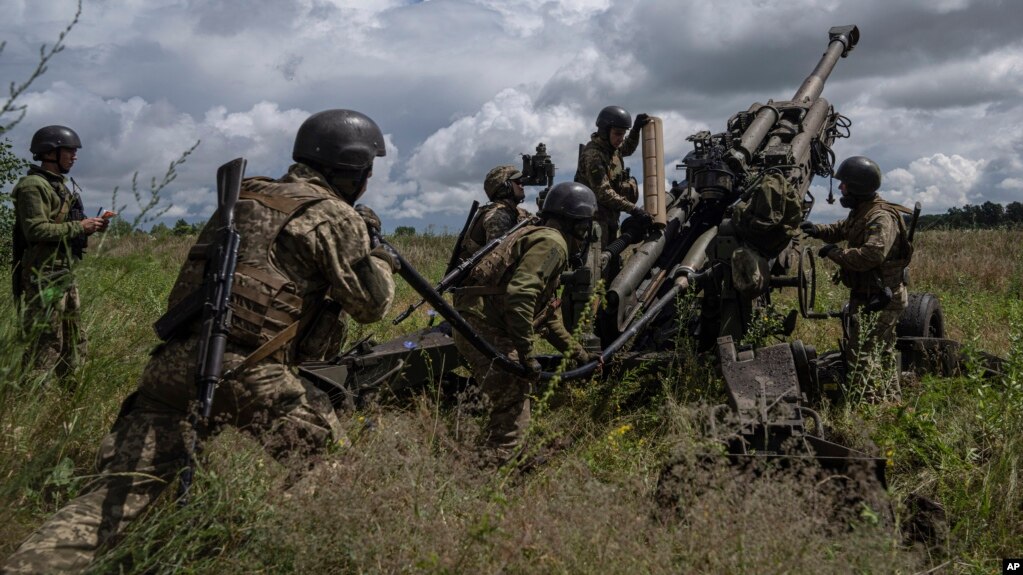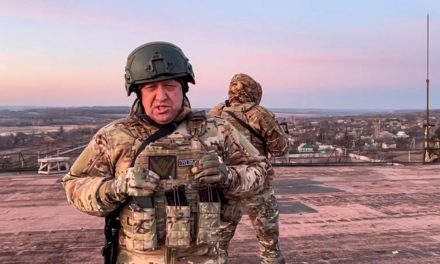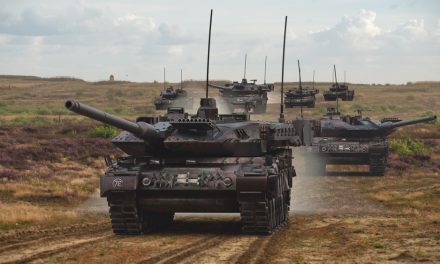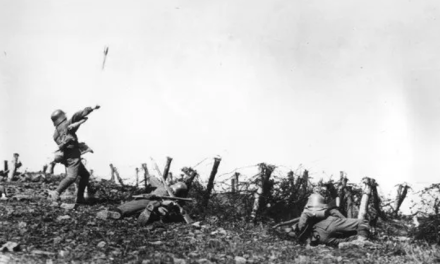Ukrainian troops with american Howitzer M777 in the Khharkiv-region, July 2022.
Bidkälla/Image source: Radio Free Europe/Radio Liberty.
The Ukrainian offensive has been going on for over two months. The front is more or less stationary. There has been no breakthrough anywhere. The Russian troops are not giving way. Many foreign comments suggest that the Ukrainian attack has definitely stalled. From the Ukrainian side we hear instead reassuring messages and calls for patience: We know what we are doing, give us time (and more weapons) and we will solve it in due time.
How is it actually going?
The latest grim news was delivered by the Washington Post citing sources in the U.S. intelligence community. There, they have apparently come to the conclusion that Ukraine will not achieve its goals with the counter-offensive. The goal has always been to cut off the land connection between Russia and the Crimean peninsula. To achieve that, the Ukrainians must reach the shores of the Sea of Azov and retake the port cities of Berdyansk and/or Mariupol. On the way there is Melitopol – a communication hub for two major highways and an electrified railway line connecting Crimea with Russia. The sources cited by WP believe that the Ukrainians will not be able to reach Melitopol, at least not this year. The Russian defense lines are simply too strong.
Everyone seems to agree that the Russian fortifications are extensive (largest in history?) well planned and strong. The Russians have had plenty of time to build them out, and they seem to have completed the task in a surprisingly competent manner. The Ukrainians face three lines of defense in depth, well-aimed artillery fire, well-placed dragon’s teeth (against tanks) and mines, an unheard of number of mines. Behind the lines are reserves prepared for counterattacks, attack aircraft and helicopters. And behind the lines await strongly fortified cities, pure fortresses, such as Melitopol.
It is quite obvious that between us in the West trained Ukrainian units for armored attacks, the Russian army prepared a defense system against just that kind of attack. And they did well, really well.
Had the war been fought by NATO forces, the Russian positions would at this point be bombarded by air and long-range rockets. That’s how it was done in Iraq, even before, after the landing in Normandy. When ground troops got stuck, it was the bomber’s turn. The only thing that could delay the German collapse was bad weather, poor visibility. As soon as the sky cleared, the bomber flight arrived.
But that kind of warfare requires superior air forces, which Ukraine does not have. Not yet anyway. It will be a long time before the announced deliveries of F-16s from Denmark and the Netherlands (several countries will follow their example). If the Ukrainians had been helped by modern air forces, the picture at the front would have looked completely different…
Western advisers suggested that the Ukrainians commit all their mobile forces to one point. It was probably hoped (we hoped) that the demoralized Russian troops would flee the field in panic at the sight of our formidable armored forces. Unfortunately, they did not flee but clung to their fortifications and fired back. Images of damaged Leopards and Bradleys became painful for the West and Ukrainians and were used again and again in Russian propaganda.
After the early setbacks, they opted instead for local attacks, spread over several longer sections of the front. The Ukrainian offensive continues painstakingly and slowly, as I wrote earlier, it takes time, a lot of time. But the attacks continue, still in three directions: in the east, at Bakhmut, in the southeast (between Donetsk and Zaporizhia), at Urozhayne and south of Zaporizhia, at Pyatychatky and Robotyne.
The Institute for the Study of War ISW states that the Ukrainians have reached central parts of the village of Robotyne and reports significant Ukrainian tactical (ie local) gains. It is precisely the attack in the Zaporizhia region that is commented on in the Washington Post – in the direction of the city of Robotyne and further towards Melitopol or – which is not mentioned in the commentary – in the other direction, towards Berdyansk and Mariupol.
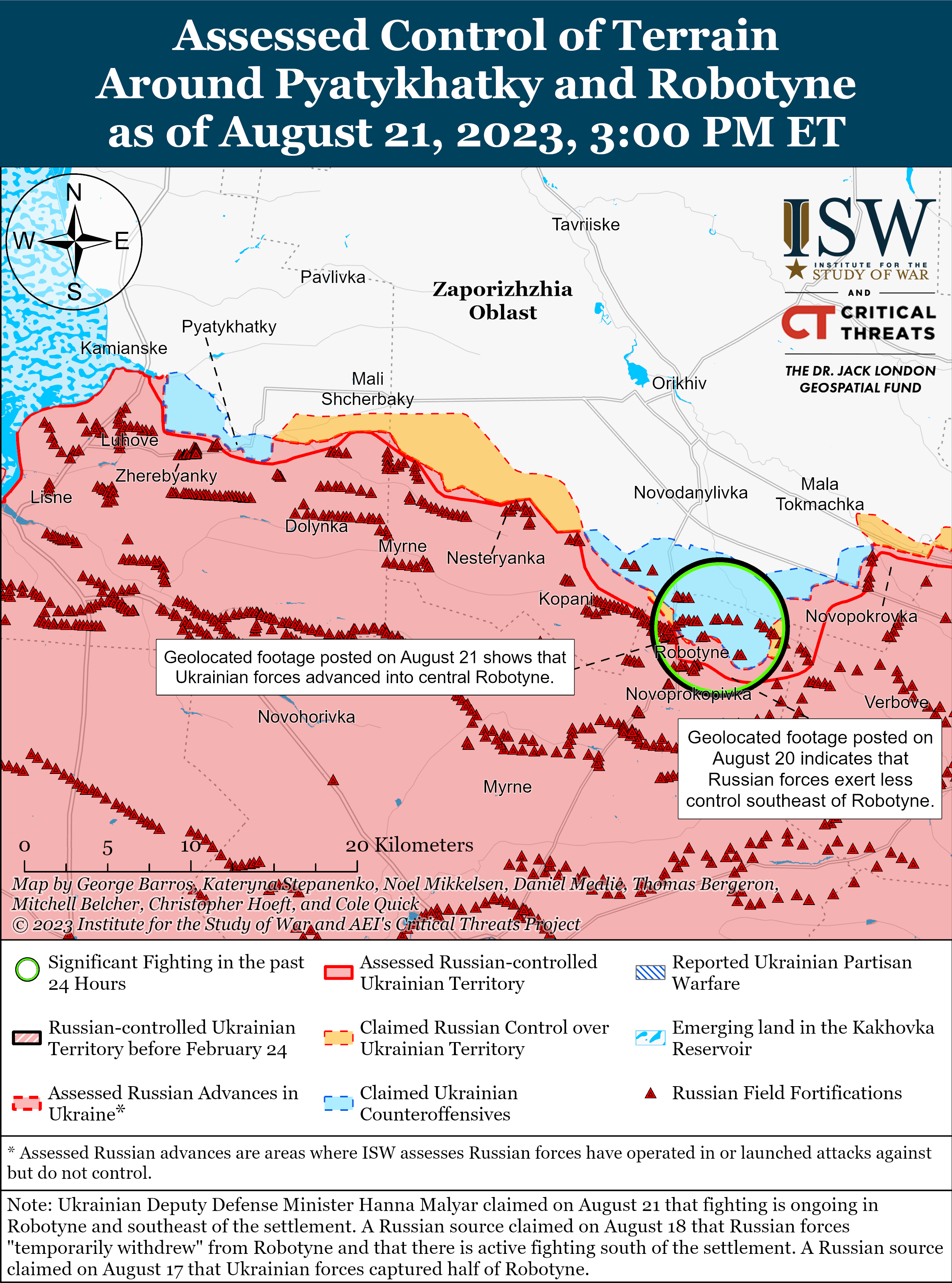
A positive picture of the situation at the front is painted in an article in the New York Times. Apparently Ukrainians, or at least local commanders on the ground, at the front are in very good spirits. They look back at the precarious situation a year ago and see a clear turnaround – now Ukrainians are better equipped, organized, the forces of the units are larger. The Ukrainian forces are moving slowly and laboriously, but they are moving forward. The Russians, on the other hand, are definitely on the defensive, pressed, less equipped and tired.
An important, very important part of Ukrainian strategy is to simultaneously systematically and consistently attack Russian supply lines and depots. It also seems that the Ukrainian artillery has finally become a match for the – so far superior – Russian.
The cautiously pessimistic picture of an offensive that has run into Russian minefields probably has as much to do with exaggerated hopes as we in the West have harbored about an imminent Russian collapse. Ukrainians on the ground have a different perspective. They don’t compare their reality with an uncertain, bright future, but with the very, very difficult situation a year ago. Of course they have hope too, but they are more focused on what is happening locally, on the ground. And there they see that things have become much better.
The Ukrainian advances have been compared to pushing forward against a Russian defensive line like against a rubber band. The band is stretched, pressed and forced ever deeper back. The question is if, or when, it fails.
Many Ukrainians at the front are apparently quite certain that it will break at some point. And when that fails, things will happen quickly, very quickly.
